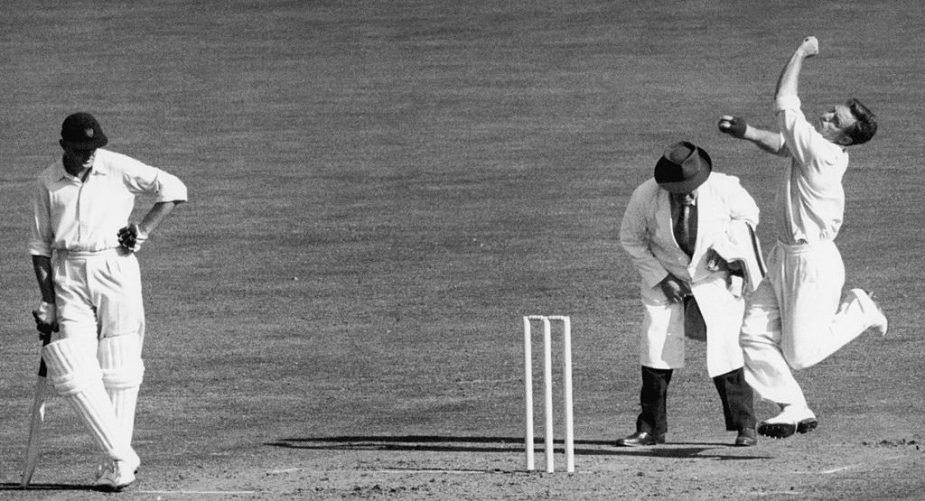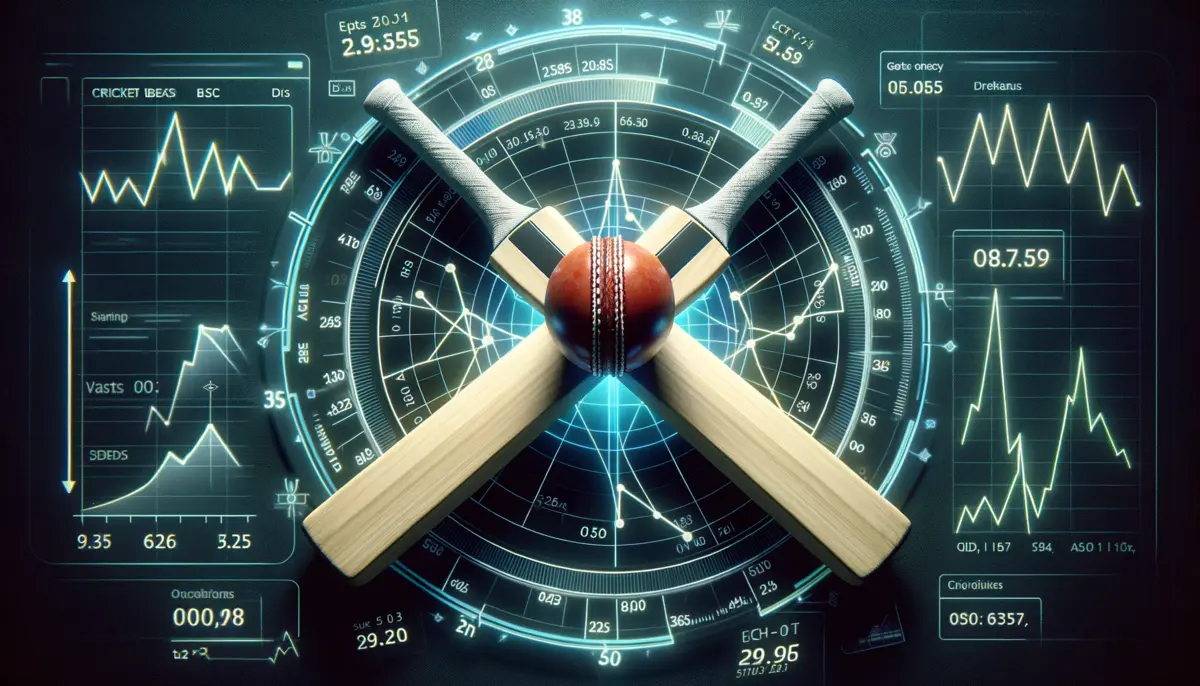In post-World War II cricket, Ray Lindwall sculpted the template for Australian pace bowling excellence, honing blistering speed with control and game-changing movement through the air.
While his career decorated the scoreboards and record books, The prospect of facing Lindwall’s pounding run-up unnerved even world-class batters of the era.
But beyond sheer pace persisted nuanced mastery – subtle changes of angle opened new weapons, as did deliveries bending or kicking up off-pitch.
Such trickery secured his status as pillar of Australia’s glory years though humility and commitment to development never wavered even into coaching roles.
Article Highlights
Hide- Ray Lindwall emerged from humble beginnings and faced socioeconomic challenges during the Great Depression era.
- Lindwall established himself as one of the world's premier fast bowlers, playing a crucial role in the undefeated 1948 Australian team.
- Lindwall made significant contributions to cricket both on and off the field, excelling as a player and later as a coach, commentator, and mentor.
- He left a lasting legacy in the world of cricket, transferring his knowledge and expertise to future generations and playing a vital role in the growth and popularity of the sport.
Looking beyond statistics reveals deeper imprints left by Lindwall that offer lessons still pertinent. He embodied adaptiveness evolution from medium pace in younger years to later fast bowling sorcery – improvements spurred through endless net repetitions. That synthesis of talent sculpting and commitment fueled timeless class.
Decades on from his playing peak, Ray Lindwall’s name persists through the Australian quick bowlers who still emulate his rhythm and techniques in their tireless quests to echo his penetration. That may be the Sydney-born maestro’s lasting badge – former terrorizer turned enduring tutor.
Early Life and Background
Ray Lindwall, born on 3 October 1921 in Mascot, a suburb of Sydney, emerged from humble beginnings to become one of cricket’s most formidable fast bowlers.
His early life, characterized by the socioeconomic challenges of the Great Depression era, laid a foundation of resilience and determination.
Colin Cowdrey
Across epochs on English cricket terrain, Michael Colin Cowdrey exhibited world-class batting ... Read More
Lindwall’s athletic prowess was evident from a young age, initially manifesting in his aptitude for rugby league, a sport which honed his physical capabilities that would later translate effectively to cricket.
An analytical examination of Lindwall’s background reveals a synergy between his athletic disciplines; the speed and coordination required in rugby league complemented his development as a cricketer.
His transition to cricket was not merely a change of sport but a recalibration of his athletic focus, which saw a refinement of his technique and a bolstering of his mental acumen.
Moreover, the early recognition of his talent by local cricket mentors played a pivotal role in channeling his raw energy into structured skill development.
Objective consideration of Lindwall’s upbringing underscores the socio-cultural milieu that shaped his early experiences. The support from his family and community, despite the pervading economic hardships, was instrumental in nurturing his sporting ambitions.
This confluence of personal drive, environmental factors, and mentorship laid the groundwork for Lindwall’s ascent in the cricketing world, setting the stage for his later achievements.
Ray Lindwall: Rise to Cricketing Fame
Building on the solid foundation of his early sporting endeavors, Lindwall’s cricketing prowess began to flourish, marking the commencement of his ascent to star status within the international cricket community. His rise to cricketing fame can be delineated through a triad of pivotal milestones:
- Debut and Early Impact: Lindwall made his first-class debut for New South Wales in the 1941-42 season. His initial performances were promising, but it was after World War II that his fast bowling rapidly evolved, leading to his Test debut for Australia against New Zealand in 1946.
- Dominance in Test Cricket: By the late 1940s, Lindwall had established himself as one of the world’s premier fast bowlers. His lethal combination of pace, swing, and accuracy terrorized batsmen globally. He played a crucial role in the legendary 1948 Australian team, known as ‘The Invincibles’, which went undefeated on their tour of England.
- Statistical Supremacy: Lindwall’s statistical record began to reflect his dominance. He was the first bowler to reach 200 Test wickets for Australia, a testament to his skill and longevity in the sport. His career statistics, including numerous five-wicket hauls, underscore the impact he had in matches across different conditions and against varied opposition.
The analytical trajectory of Lindwall’s career underscores his transformation from a promising talent to a cricketing icon, with his performances etching his name indelibly into the annals of cricketing history.
Notable Career Highlights
Throughout his illustrious career, Ray Lindwall achieved numerous milestones that not only exemplified his mastery of fast bowling but also cemented his legacy as a cricketing legend.
His statistical records and match-winning performances have been meticulously documented, showcasing the impact he had on the game during his era.
Here we present a succinct tabular representation of some of Lindwall’s career highlights to illustrate the breadth of his achievements:
| Milestone | Detail |
|---|---|
| Test Debut | vs. New Zealand, Wellington, 1946 |
| Test Wickets | 228 wickets in 61 matches |
| Best Bowling Figures | 7/38 vs. England, Headingley, 1953 |
| Batting Average | Over 21 with two centuries |
This table encapsulates key aspects of Lindwall’s career, yet the totality of his impact is far more expansive. His prowess with the ball was characterized by a lethal combination of pace, swing, and precision, which often outclassed the opposition.
Analyzing his performances against the backdrop of the era’s playing conditions further augments the appreciation of his skill. Lindwall’s ability to contribute with the bat, as evidenced by his batting average and centuries, underscored his versatility and added depth to the Australian side. His cricketing journey is a testament to excellence, with a legacy that endures in the annals of cricket history.
Ray Lindwall: Lindwall’s Statistical Legacy
Consistently, Ray Lindwall’s career statistics reflect not just his prowess as a fast bowler, but also the indelible mark he left on the game of cricket. His numerical contributions can be distilled into an impressive array of figures that underscore his cricketing mastery:
- 228 Wickets: Lindwall captured 228 wickets in 61 Test matches, maintaining an exceptional average of 23.03, a testament to his consistent ability to dismiss batsmen.
- 2,475 Runs: Beyond his bowling, he amassed 2,475 runs at an average of 21.15, highlighting his competency with the bat, an attribute that made him a genuine all-rounder.
- 12 Five-wicket hauls: His tally of 12 five-wicket hauls in innings speaks to his capacity for game-changing performances, capable of decimating opposition batting line-ups.
This statistical legacy, when analyzed, reveals not only Lindwall’s skill but also his strategic acumen and adaptability across different pitches and conditions.
His strike rate of 62.3 is particularly noteworthy, indicating his ability to claim wickets at regular intervals, thereby exerting pressure on the opposition.
His economy rate of 2.30 runs per over is reflective of an era where scoring rates were generally lower, yet it still demonstrates his control and efficiency.
These statistics, coupled with his longevity in the sport, cement Lindwall’s status as one of cricket’s premier fast bowlers and an enduring icon in the annals of the game.
Post-Retirement Contributions
Upon hanging up his cricketing boots, Ray Lindwall continued to enrich the sport, contributing significantly as a coach, commentator, and mentor to younger players.
His post-retirement endeavors were not merely ceremonial but were characterized by the same dedication and analytical acumen that defined his playing days.
Lindwall’s foray into coaching was marked by a strategic approach, focusing on the refinement of fast bowling techniques and the psychological aspects of the game.
His commentary was replete with insights that only a player of his caliber could provide, enhancing the understanding of the game for listeners worldwide.
Lindwall also participated in various administrative roles, bringing a wealth of experience to the governance of cricket. His mentorship extended beyond formal positions, as he often provided guidance to emerging talents, imparting wisdom about the nuances of high-level competition. The following table encapsulates key aspects of Lindwall’s post-retirement contributions:
| Role | Impact |
|---|---|
| Coach | Fostered a generation of fast bowlers, emphasizing technique |
| Commentator | Elevated the broadcast experience with expert analysis |
| Mentor/Administrator | Shaped the strategic direction of cricket institutions |
Lindwall’s post-retirement contributions were instrumental in perpetuating the excellence and integrity of the sport, ensuring his influence persisted long after his active playing days concluded.
Summary
Ray Lindwall’s legacy in cricket is characterized by a prodigious blend of pace, precision, and prowess that has left an indelible mark on the game.
His statistical records are a testament to a career replete with formidable achievements, securing his place among the sport’s all-time greats.
Beyond the playing field, Lindwall’s contributions enriched cricket’s tapestry, ensuring his impact endured. His life and career continue to inspire and set a benchmark for excellence within the cricketing fraternity.

















